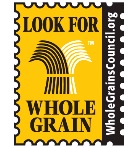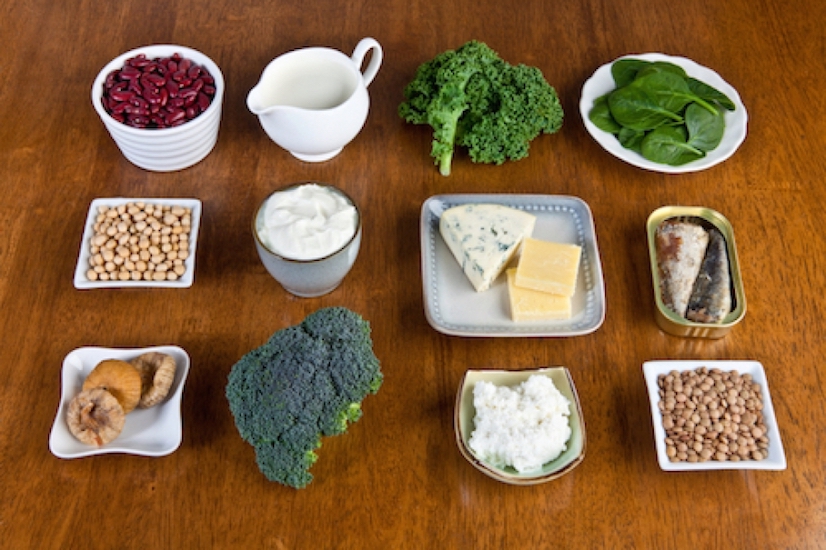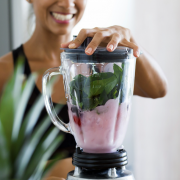For well over 20 years the eyes and ears of dieters, health enthusiasts and the general public have been continuously bombarded with confusing and oftentimes misleading packaging and labeling information courtesy of the food and beverage industry. Unfortunately, successful employment of such tactics and resultant changes in peoples’ everyday food intake patterns have paralleled the epidemics of obesity, diabetes, heart disease and other diet-related health problems.
So the question is: Are deceptive food and beverage labeling ploys making people sick and fat? My answer is YES! In fact, here are seven of the most erroneous that have brought utter confusion, unnecessary weight gain and potential health problems to unsuspecting consumers.
1. “Gluten-Free”
Gluten-free eating is the latest craze among health enthusiasts and folks seeking to lose weight. In fact, these days you can find a “gluten-free” version of just about every product from bread to frozen pizza to cakes and cookies. Despite being perceived as healthier, most of these foods are overly processed and oftentimes substantially higher in calories and lower in nutrients when compared to their gluten-containing counterparts.
Worst of all they cost more! In the event that you have celiac disease or any other diagnosed medical condition that requires you to eliminating or reduce your intake of gluten-rich foods, it’s important to ensure that the gluten-free foods you choose are actually nutritious. There’s no sense in avoiding allergy-related complications of one disease while increasing your risk for another.
Related Article: The Gluten-Free Lifestyle: Is It Really a Fad?
2. “Made with Real Fruit”
Of all the false claims commonly depicted on food and beverage packaging, “Made with Real Fruit” is by far one of the most overused and misleading. In general, fruit is at the top of the list when it comes to wholesome, healthy foods. However, simply noting that a product is made with or contains real fruit means absolutely nothing from the standpoint of nutrition.
In all actuality, the products that claim to be made with real fruit usually contain very little (less than 2-5% combined) but a whole lot of added sugar and preservatives, among which include Fruitopia beverages, Fruit Roll-Ups and Froot Loops (notice how the word “fruit” isn’t used in the latter). The made with real fruit claim requires a real look at the nutrition label and ingredients list in order to determine exactly what the fruit is and where it comes from.
It’s also important to understand that whole fruit is the best way to meet your daily recommend intake of 2-4 servings.
Related Article: The Best Time to Eat Fruit
3. “Low-Carb”
Low-carbohydrate (“low-carb”) diets have been around for decades and they continue to gain mainstream popularity as most people who go on these diets experience rapid and substantial weight loss. Unfortunately, the ‘success’ associated with low-carb diets has led many people to believe that all carbohydrates are ‘bad’ or unhealthy.
While some carbohydrate-rich foods are highly processed, calorie-dense and nutrient devoid, carbohydrates themselves aren’t bad, as most house incredibly large quantities of vital nutrients and antioxidants. If you’re one who regularly indulges in pork skins, beef jerky and artificially sweetened breads, cakes and cookies due to their “low-carb” status, do yourself a favor and opt for better nutrition as opposed to carb counting.
Related Article: What You Should Know About Carbs and the Glycemic Index
4. “Cholesterol-Free”
A while back a “self-proclaimed” nutritionist questioned my choice of using shrimp in one of my salad recipes touting its “high-cholesterol” content. I forgave her, as cholesterol is among the most touted boogeyman among the medical community. In spite of widespread belief, research shows that dietary cholesterol contributes very little, if any, to the development of high-cholesterol, heart disease and related health problems.
Also, unbeknownst to many, day-to-day consumption of foods comprised of artificial trans-fat, empty carbohydrates and added sugar is much more of a contributor to disease and overall poor health. Interestingly enough, the packaging on such foods is most often stamped with the “cholesterol-free” brand, as if that somehow makes them healthy. Some of the most wholesome foods contain cholesterol along with countless other nutrients among which include eggs, salmon and lamb.
Related Article: High Cholesterol: What You Need to Know
5. “Fat-Free”
Fat-free foods are a hot commodity in the weight loss market. Since a large majority of full-fat products tend to be calorie-dense, people who are trying to lose weight or maintain a weight loss often snub them. While fat-free foods are generally lower in calories, their subpar nutritional quality can do you more harm than good. For example, fat-free dressings typically have lower calorie counts when compared to full-fat dressings but they’re typically highly processed, devoid of nutrients and rich in added sugar.
More and more research suggests that healthy fats should be incorporated into the diet in order to improve cholesterol and lower disease risk. Such fats include nuts and seeds, avocado and high -quality oils like extra-virgin olive oil. With that said, to optimize your health, simply choose your fats wisely and always monitor your portions and adhere to recommended serving sizes. It’s as simple as that!
Related Article: Good Fats Versus Bad Fats: What You Need to Know About Dietary Fat
6. “Made with Whole Grains”
Whole grains are extremely nutrient-dense, providing large amounts of vitamins, minerals and dietary fiber, which is why we firmly recommend them for everyday consumption. However, it’s important to understand that all “whole grains” are not created equal, as many products marketed as whole grain (100% wheat flour, multigrain, cracked wheat, fifteen grain, and twelve grain) are really refined having been stripped of most essential nutrients.
 Real whole grain products contain at least 16 grams per serving. In order to get a sufficient amount of whole grains into your diet, opt for products made from 100% whole grain including oatmeal, quinoa, popcorn, whole wheat, brown rice, whole rye, whole grain barley, and wild rice. You should look for the “Whole Grains Council” logo on your product package and even then pay close attention to their overall sugar content.
Real whole grain products contain at least 16 grams per serving. In order to get a sufficient amount of whole grains into your diet, opt for products made from 100% whole grain including oatmeal, quinoa, popcorn, whole wheat, brown rice, whole rye, whole grain barley, and wild rice. You should look for the “Whole Grains Council” logo on your product package and even then pay close attention to their overall sugar content.
7. “High-Fiber”
Regular intake of dietary fiber has been shown to reduce the risk of numerous diet-linked chronic diseases including heart disease, type 2 diabetes and obesity. Dietary fiber is naturally present in plant-based foods (vegetables, fruit, nuts, seeds and legumes), however, there are many overly processed, high-sugar snack bars, cereals and beverages on the market labeled as “high fiber”.
These foods actually contain what are known as “functional fibers”, which are either isolated from natural sources or artificially manufactured. While functional fibers can be beneficial when it comes to meeting your daily fiber intake, simply adding them to foods doesn’t make them any healthier. Just look at some of the many sugar-rich breakfast cereals that now carry the “high-fiber” label like Froot Loops and Apple Jacks.
Related Article: How Different Types of Fiber Affect Your Health
Eating a nutritious, well-balanced diet is critical for weight management and overall good health so be smart and beware of these and other all-to-common mislabeling ploys. To ensure that you’re making the best dietary choices, it’s important that you familiarize yourself with food labels and actual ingredients as opposed to simply taking distorted marketing terms on food packaging at face value.
Related Article: Simple Strategies for Deciphering Food Labels







